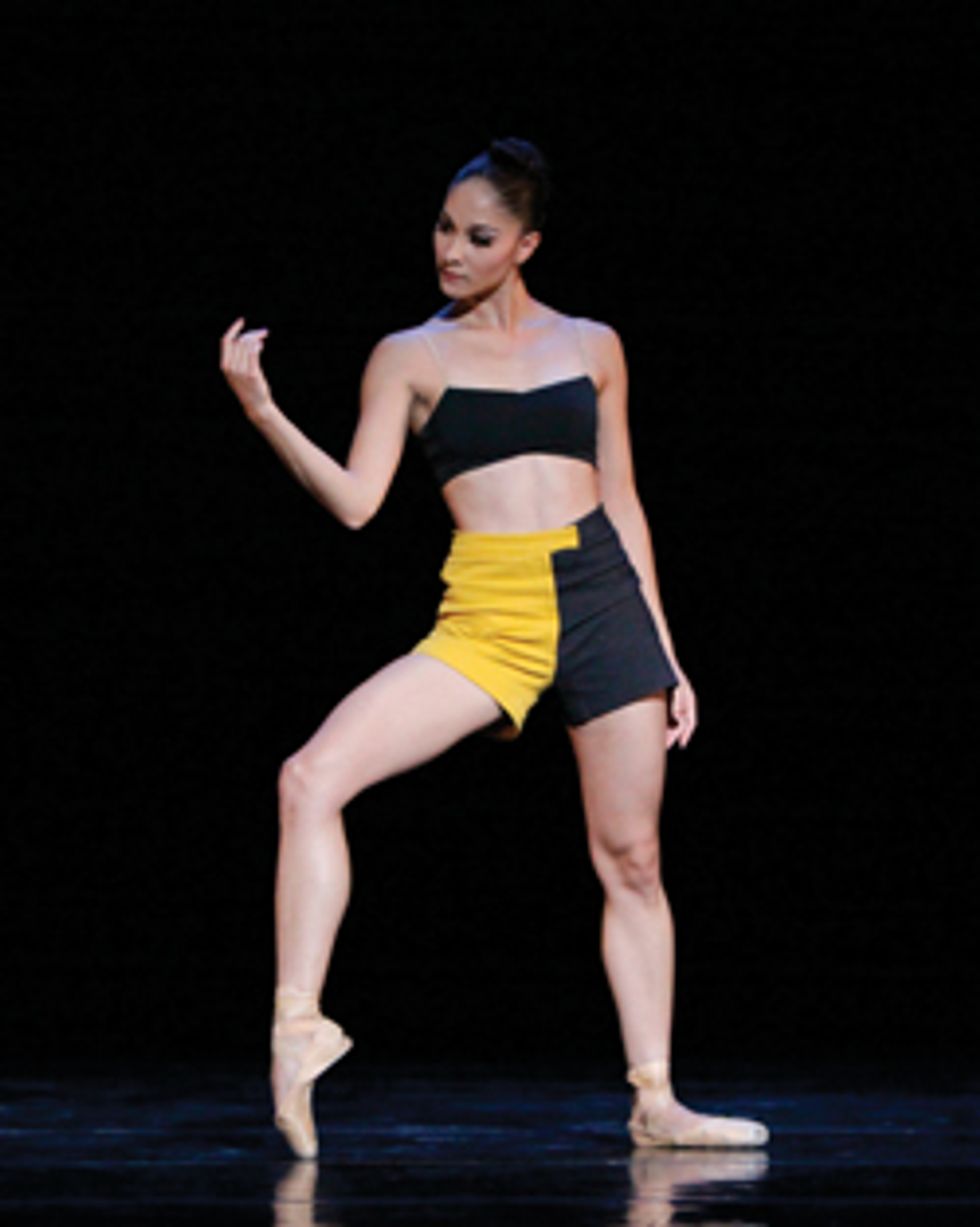Limp Biscuits

Pennsylvania Ballet soloist Gabriella Yudenich says she didn’t grow up with perfect feet—but she made the best of what she had. (Paul Kolnik)
“I grew up in a ballet family—my mom and dad were principals with Pennsylvania Ballet—so I found out pretty early that I didn’t have the best feet,” says PAB soloist Gabriella Yudenich. By age 12, Yudenich understood improving her feet would have to be a key focus in her ballet training. “I knew I’d never have an amazing natural arch, but my goal was to get to the point where people would be able to watch my dancing and see my artistry—not my feet.”
With a lot of hard work, she met that goal. If you have feet that aren’t ideal, you can do the same. You won’t be able to change how your feet are built, but you can strengthen your foot muscles, safely stretch for greater mobility and learn how to make your feet work for you.
Building Strength
“The Thera-Band is a miracle for improving bad feet,” says Carlos Valcárcel, director of the School of Ballet Arizona. He recommends using a Thera-Band to provide resistance as you point and flex the foot, working slowly and taking care not to sickle. If you struggle with sickling in general, you can also hold the Thera-Band on the inside of your foot and use the resistance to help you practice gently winging your pointed foot.
Dancer Amy Ruggiero, who performed in the Radio City Christmas Spectacular this winter after touring with Twyla Tharp’s Come Fly Away last year, recommends keeping your ankle pointed and using the Thera-Band to work through your toes, which will strengthen your toes and the muscles of your forefoot. In this pointed position, try to relax your Achilles tendon and let your forefoot do the work. To further develop your foot muscles, stand with your feet on a towel on the floor. Keep your heels planted and use your toes to slowly scrunch the towel toward you. When the towel is as scrunched as it can get, flatten it out and start again.
Make foot-strengthening exercises part of your daily warm-up. “It’s unbelievable how much more mobility you can get when you properly warm up your feet before dancing,” says Ruggiero, who, like Yudenich, struggled with less-than-ideal feet growing up. During class, feeling the resistance of the floor starting at the barre can help you develop the articulation and strength you’ll need in center. And, Ruggiero adds, “Don’t underestimate the value of repeated relevés.”

You may be tempted to aggressively force your arches—but don’t! Be gentle. (iStock)
Gaining Flexibility
In addition to strengthening exercises, you can include some foot stretches in your daily regimen. One stretch Yudenich still relies on involves rising onto a high demi-pointe in parallel and gently lowering her body weight down and forward over her feet, like a modified grand plié. In this position, always make sure to keep your weight over your first and second toes.
She also believes in having a partner stretch her feet, but cautions, “You have to be careful because the other person can’t feel your stretch. Don’t let him or her push you too hard or the wrong way—that can overstretch or strain your muscles.” If you don’t have a partner, you can use your hands to gently stretch your feet, avoiding sickling.
What shouldn’t you do to improve foot flexibility? “Never put your feet beneath a heavy object to stretch them,” Valcárcel says, because the risk of injury is too great. You should also be wary of foot-stretching devices that claim to improve your feet. Many of them are more harmful than beneficial.
If you’re hoping to drastically change your feet, talk to your teacher to ensure you’re stretching safely. Ruggiero forced her feet into foot stretchers as a teen, danced in dead pointe shoes and ended up with an injury that had her off pointe for eight months. “I didn’t understand until later in life that my feet needed strength and alignment first,” she says.
Accepting Your Limits
To improve your feet, you have to understand them. “Spend time in front of the mirror with your teacher looking at your line to see what positions work best for you,” Valcárcel says. All you really need is an unbroken line from the knee to the toe when your foot is pointed, with a foot that’s straight or slightly winged. Avoid hiding your feet inside bulky booties and legwarmers. “When you cover the problem, you can’t see the shape and work on it,” Valcárcel explains.
Try not to compare your feet to your classmates’. “If you’re not born with arches like Paloma Herrera’s, you’re not going to be able to create them,” Ruggiero says. “If you can get your feet to complete your line, so it’s not jarring or unaesthetic, they’re doing the work you need them to do.”
Finally, try to work toward better feet without neglecting the rest of the package. “Remember that there’s a beauty when you dance, and when people look at you, they’re looking at that beauty overall—not just at your feet,” Yudenich says. “Your feet are just a part of what you have to offer.”




